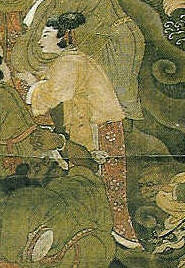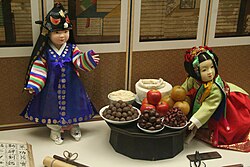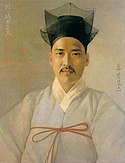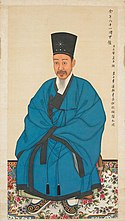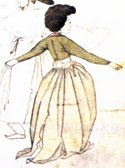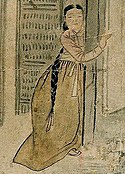Goryeohanbok
Note: The enforcement of the revised Copyright Act on December 30, 2018 extended the copyright term of works whose copyright was valid on that day to 70 years. Do not use this template for works of the copyright holders who died after 1967.
Use {{PD-Japan-oldphoto}} for photos published before December 31, 1956, and {{PD-Japan-film}} for films produced prior to 1953. Public domain works must be out of copyright in both the United States and in the source country of the work in order to be hosted on the Commons. The file must have an additional copyright tag indicating the copyright status in the United States. See also Copyright rules by territory.
Relevantní obrázky
Relevantní články
Korejský krojKorejský kroj, v Jižní Koreji nazývaný hanbok a v Severní Koreji nazývaný čosŏnot, jsou tradiční šaty nošené v Koreji. Jsou obvykle charakterizovány zářivými barvami a jednoduchými liniemi bez kapes. Ačkoli obě varianty názvu lze přeložit jednoduše jako „korejský oděv“, v moderní době se oběma rozumí specificky oblek vycházející z období dynastie Čoson. Kroj je užíván jako poloformální nebo formální oblečení při tradičních slavnostech a zábavách. Moderní hanbok nedodržuje přesně původní styl dynastie Čoson, protože z praktických důvodů v průběhu 20. století prošel některými významnými změnami. .. pokračovat ve čtení
